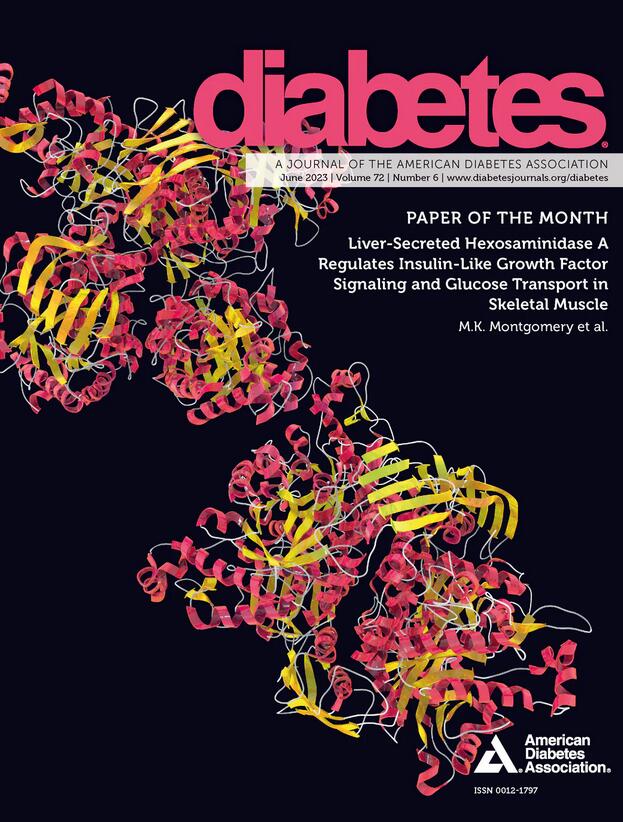多组学分析与患者队列中的粪便类型分层以及将 Blautia 鉴定为 T2DM 潜在的细菌调节剂
IF 6.2
1区 医学
Q1 ENDOCRINOLOGY & METABOLISM
引用次数: 0
摘要
宿主和肠道微生物群的异质性阻碍了微生物对 2 型糖尿病(T2DM)的精准干预。在此,我们利用横断面患者队列和动物实验研究了患者分层和细菌调节剂干预的新特征。我们收集了 103 名近期发病的 T2DM 患者和 25 名健康对照者(HCs)的粪便/血液/尿液样本,进行了肠道微生物组成/代谢物分析,并将其与宿主转录组/代谢组/细胞因子和临床数据相结合。粪便类型(干粪便/松软粪便)是最近在微生物组研究中探讨的粪便微环境特征,被用于 T2DM 患者分类,因为在我们的协变量分析中,它解释了多组学数据集中所有临床参数之间的大部分差异。在多个机器学习模型中,LightGBM 模型是最佳的,它能将干凳型 T2DM(DM-DS)和松凳型 T2DM(DM-LS)与 HC 和其他 T2DM 明确区分开来。与DM-DS相比,DM-LS表现出不一致的肠道微生物分类和功能特征、严重的宿主代谢紊乱和胰岛素分泌过多。在我们的分层多组学数据集中,进一步的交叉测量-关联分析将不同的微生物特征,尤其是布劳氏菌丰度,与 T2DM 表型联系起来。值得注意的是,给 T2DM 小鼠口服布劳菌能抑制脂质积累、体重增加和血糖升高,同时调节肠道细菌组成,这揭示了布劳菌的治疗潜力。我们的研究强调了粪便微环境分层和补充布劳迪对 T2DM 的临床意义,为代谢性疾病的微生物精准治疗提供了广阔前景。本文章由计算机程序翻译,如有差异,请以英文原文为准。
Multi-omics analyses with stool-type stratification in patient cohorts and Blautia identification as a potential bacterial modulator in T2DM
Heterogeneity in host and gut microbiota hampers microbial precision intervention of type 2 diabetes mellitus (T2DM). Here, we investigate novel features for patient-stratification and bacterial modulators for intervention, using cross-sectional patient cohorts and animal experiments. We collected stool/blood/urine samples from 103 recent-onset T2DM patients and 25 healthy controls (HCs), performed gut microbial composition/metabolite profiling, and combined it with host-transcriptome/metabolome/cytokines and clinical data. Stool-type (dry/loose-stool), a feature of stool-microenvironment recently explored in microbiome studies, was used for T2DM patientstratification as it explained most of the variation in multi-omics dataset among all clinical parameters in our covariate analysis. T2DM with dry-stool (DM-DS) and loose-stool (DM-LS) were clearly differentiated from HC and each other by LightGBM-models, optimal among multiple machine-learning models. Compared to DM-DS, DM-LS exhibited discordant gut microbial taxonomic and functional profiles, severe host metabolic disorder, and excessive insulin secretion. Further cross-measurement-association-analysis linked the differential microbial profiles, in particular Blautia abundances, to T2DM phenotypes in our stratified multi-omics dataset. Notably, oral supplementation of Blautia to T2DM mice induced inhibitory effects on lipid accumulation, weight gain, and blood-glucose elevation with simultaneous modulation of gut bacterial composition, revealing the therapeutic potential of Blautia. Our study highlights the clinical implications of stool-microenvironment stratification and Blautia supplementation in T2DM, offering promising prospects for microbial precision treatment of metabolic diseases.
求助全文
通过发布文献求助,成功后即可免费获取论文全文。
去求助
来源期刊

Diabetes
医学-内分泌学与代谢
CiteScore
12.50
自引率
2.60%
发文量
1968
审稿时长
1 months
期刊介绍:
Diabetes is a scientific journal that publishes original research exploring the physiological and pathophysiological aspects of diabetes mellitus. We encourage submissions of manuscripts pertaining to laboratory, animal, or human research, covering a wide range of topics. Our primary focus is on investigative reports investigating various aspects such as the development and progression of diabetes, along with its associated complications. We also welcome studies delving into normal and pathological pancreatic islet function and intermediary metabolism, as well as exploring the mechanisms of drug and hormone action from a pharmacological perspective. Additionally, we encourage submissions that delve into the biochemical and molecular aspects of both normal and abnormal biological processes.
However, it is important to note that we do not publish studies relating to diabetes education or the application of accepted therapeutic and diagnostic approaches to patients with diabetes mellitus. Our aim is to provide a platform for research that contributes to advancing our understanding of the underlying mechanisms and processes of diabetes.
 求助内容:
求助内容: 应助结果提醒方式:
应助结果提醒方式:


